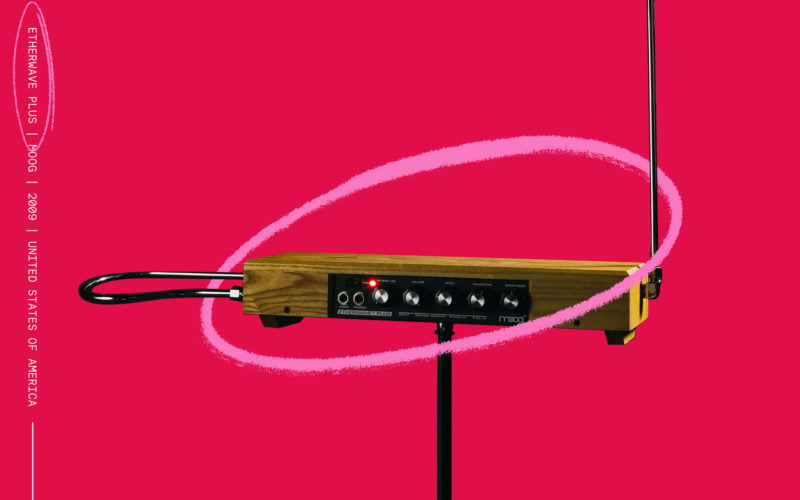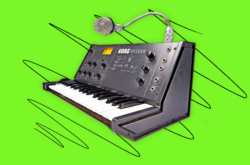You may have heard the theremin in the eerie soundscapes of old-timey horror movies, or in the performances of virtuoso thereminists like Clara Rockmore.
Among the first electronic instruments, the theremin was a standout in how it could be played without any physical contact. Typically, a theremin consists of a wooden box with 2 antennae; one controls pitch and one controls amplitude. By moving their hands ever so slightly, skilled performers can play melodies in distinctive timbres that sound something like a cross between a violin and a soprano voice. In this article, we’ll take a look at how the theremin uses the power of electromagnetic interference to create haunting-yet-beautiful portamento melodies.
The history of the theremin
The theremin was originally developed in the USSR by researcher Leon Theremin, while the innovative young mind was hard at work developing a high-frequency oscillator capable of measuring electric force through gases. As Theremin experimented, he discovered that he could change the pitch of an audio signal generated by this oscillator by changing the position of his body in relation to the electromagnetic field he was attempting to measure. Not long after adapting the device to harness this capability, Theremin had the opportunity to show it off to Lenin, who was so taken with Theremin’s new instrument that he recruited him to gather intelligence on a US tour.
How the theremin works
Theremin’s invention works by harnessing the power of electromagnetic interference. The human body is a capacitor; our bodies conduct electricity, and can store electric charges (as you know if you’ve ever tried to pet your fluffy cat after shuffling your feet along a carpet while wearing socks).
Each of the theremin’s two antennae are connected to circuits that oscillate at radio frequency; one oscillator’s frequency is fixed, while the other’s is variable. When the thereminist uses their body to interfere with the electromagnetic field, the instrument measures the difference between the fixed and the variable oscillators, and translates this difference to a pitch (or amplitude).
This translation is governed by a concept known as the heterodyne principle. Because the theremin can measure the difference between its fixed oscillator and the variable oscillator, it’s capable of measuring a weak signal (such as the shift in capacitance generated by moving one’s hand five centimeters forward or backward) and amplifying it so that it can be played as a musical instrument.
Not as easy as it looks
Thereminists appear to play their instruments almost like invisible strings, employing techniques like vibrato on held notes. Although skilled players might make it look easy, playing the theremin requires great musical coordination and serious technical ability. Even setting up multiple theremins on one stage can cause problems: since electromagnetic fields aren’t visible, theremins can be finicky to troubleshoot.
Still, if you’re interested in electronic instruments, synthesizers, and electric circuits, the theremin is a great topic to research even if you don’t end up trying to play it yourself. Check out a few of the examples below for more information, or just a bit of easy listening.
A performance of a short contemporary piece written for theremin and continuum
Renowned thereminist Carolina Eyck explains the theremin and how she approaches playing it
Lydia Kavina’s TED Talk on the theremin
Is there an instrument you’d like to see us cover next? Let us know in the comments below.
Explore royalty-free one-shots, loops, FX, MIDI, and presets from leading artists, producers, and sound designers:
May 6, 2020


